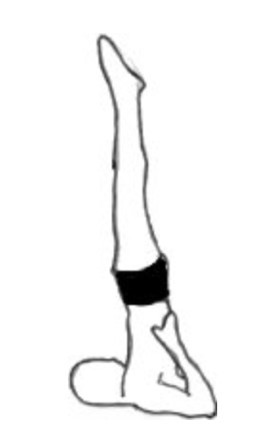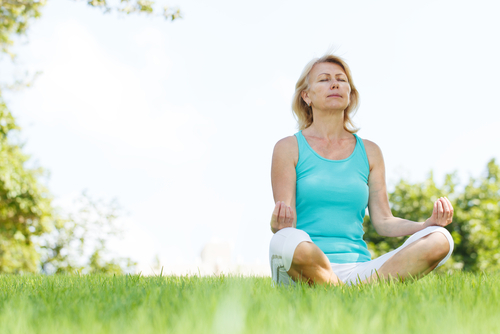Did you know that improving your thyroid function may be as simple as a few yoga postures? Like all parts of your body, your thyroid is only as healthy as its blood supply. Yoga postures can compress the thyroid and the surrounding lymphatic tissues to squeeze out the blood and intracellular lymphatic fluids making room for fresh replacements. Think of it like wringing out a washcloth under running water.
How effective is yoga?
One study took participants and watched how yoga influenced their thyroid hormone output. It showed that a measurable change in thyroid hormone output could be seen as quickly as a month. The volunteers were divided into two groups -- one did specific yoga postures for the thyroid, the other did physical therapy exercises for the same amount of time and with the same frequency. [1] Those doing the yoga poses showed a measurable increase in thyroid hormone output in as quickly as the first month. No such changes were shown for those doing physical therapy. Clearly the results were more than just those from general exercise.
Which poses help the most?
The two poses thought to have the strongest affect on thyroid function are the Shoulder-Stand (Sarvangasana) and the Fish-Pose (Matsyasana). Like most yoga poses, these both have variations making them accessible to the complete yoga beginner as well as challenging for the advanced yogini or yogi.
How to do them
Shoulder Stand (Sarvangasana)
Beginner version
Some do find the balance and position of the shoulder stand challenging at first. Here is a way to still get the benefit as you get comfortable with the position.
Lie with your right shoulder against a wall on a cushioned surface like a carpet or a Yoga mat. Raise your legs and hips off of the ground as you rotate facing your head away from the wall. Bend your legs at the waist so your feet are on the wall for support.
When in position, your weight is supported primarily by your shoulders, your arms, and the back of your neck. Your chin should be tucked snugly against your sternum and you should feel a compression in your lower neck and your thyroid area. As you get comfortable, use just one leg for support. Start with 10-30 seconds and work up to a full minute.
Regular version
Lie on your back and raise your body and legs upward, supporting them with your hands on your mid-back. Your weight will be supported primarily by your shoulders, neck, and the back of your upper arms. Hold the position for 1-2 minutes.
In yoga, poses that challenge the body in one direction are best followed up with poses that challenge the opposite motions. Fish Pose is the ideal complement to Shoulder Stand.
The Fish Pose is more accessible to people of a variety of fitness levels then the Shoulder Stand.
Regular Version
Lie on your back on a soft surface. Slide your hands palm down under your buttocks. Raise your chin and look upwards, resting the top of your head on the floor. Whereas the Shoulder Stand created a compression on the neck and thyroid area, the Fish Pose creates a stretch across this same area. Start with 10-30 seconds and work up to 1-2 minutes.
Building a Practice
Plan to practice these poses on alternating days for 2 minutes each. You may see changes in thyroid function as early as the first four weeks but it may take several months. If you are on thyroid medications, be sure to have blood tests at least every three months in case you need an adjustment to your dosage.
References:
1. S. B. Rawal, M. V. Singh, A. K. Tyagi, W. Selvamurthy, B. N. Chaudhuri. Effect of yogic exercises on thyroid function in subjects resident at sea level upon exposure to high altitude. International Journal of Biometeorology. March 1994, Volume 38, Issue 1, pp 44-47.

